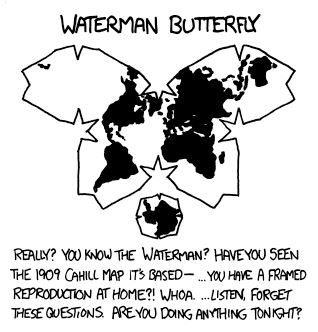Located in London, I measured the RTT or round trip time to 574,691 random webservers and plotted the times on the globe.

Discovery was done with masscan, measurements using hping and plotting with an old Python script I’ve revived and enhanced.
This is part of the next writeup on my blog, with which I will be posting any of the code I’ve used.


It is faster per distance covered, but the distance that needs to be covered is significantly larger so it cancels out i think.
I haven’t digested this whole paper, but it seems like it would be faster than fiber all the way. https://people.eecs.berkeley.edu/~sylvia/cs268-2019/papers/starlink.pdf
Thanks for the source :)
So yeah makes sense. The inital distance to space completely tanks the short distance latency, but eventually gets compensated by the higher transmissions speed when trying to cover longer distances. I havent found it yet, but what i really wanna know is the distance value at which sat overtakes fiber. I dont think this paper covers that sadly.